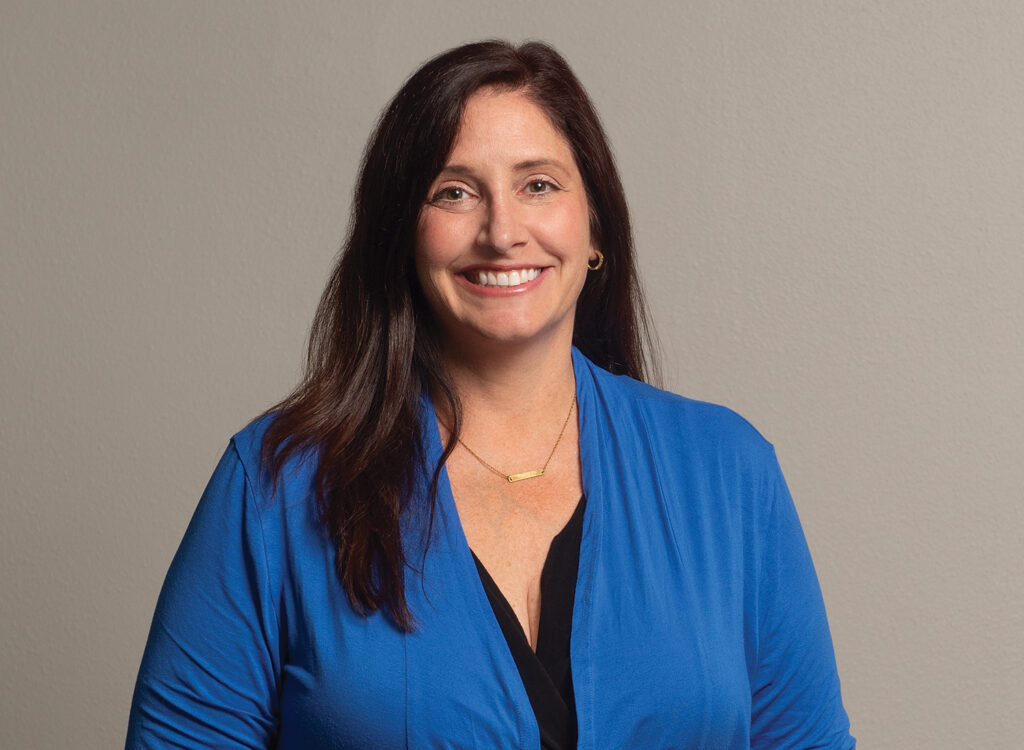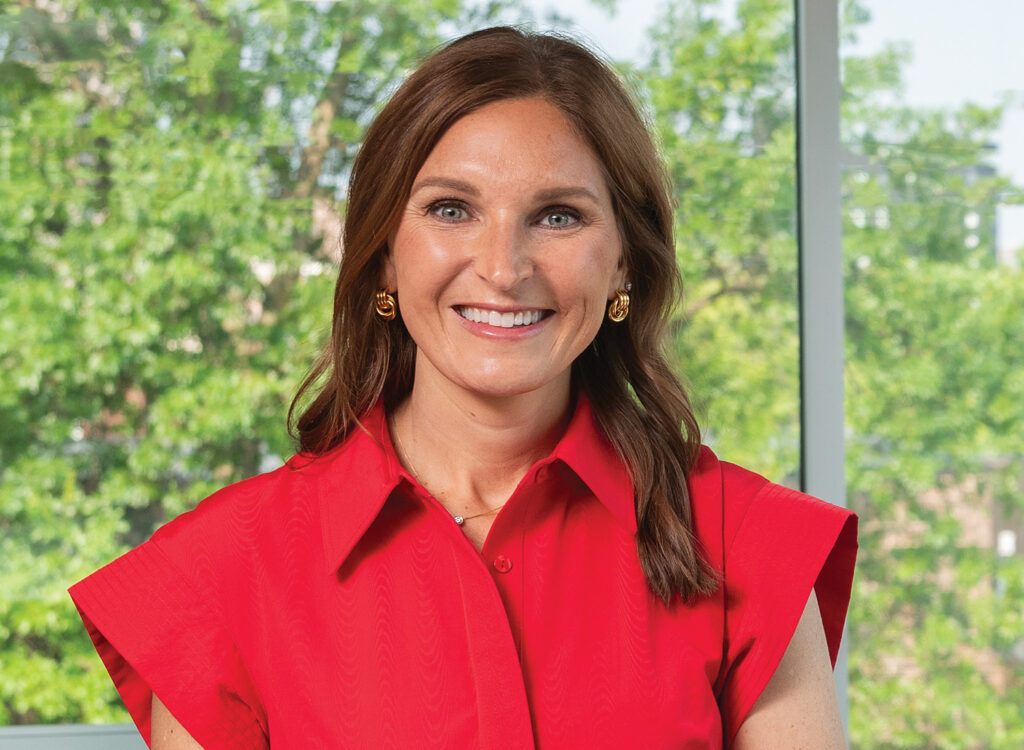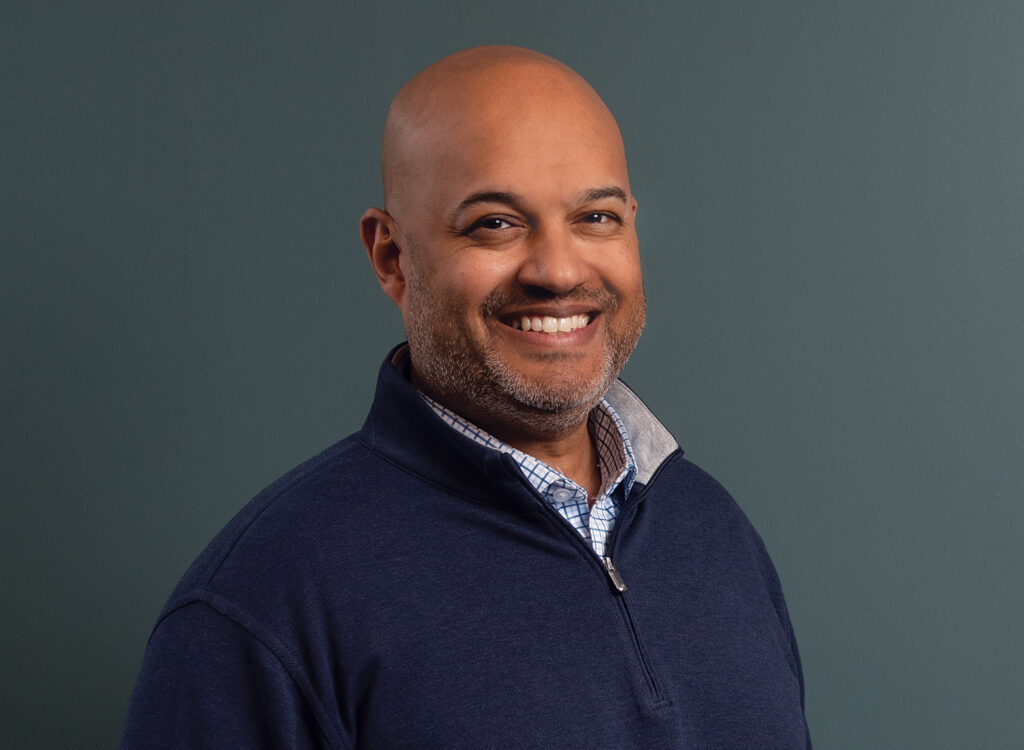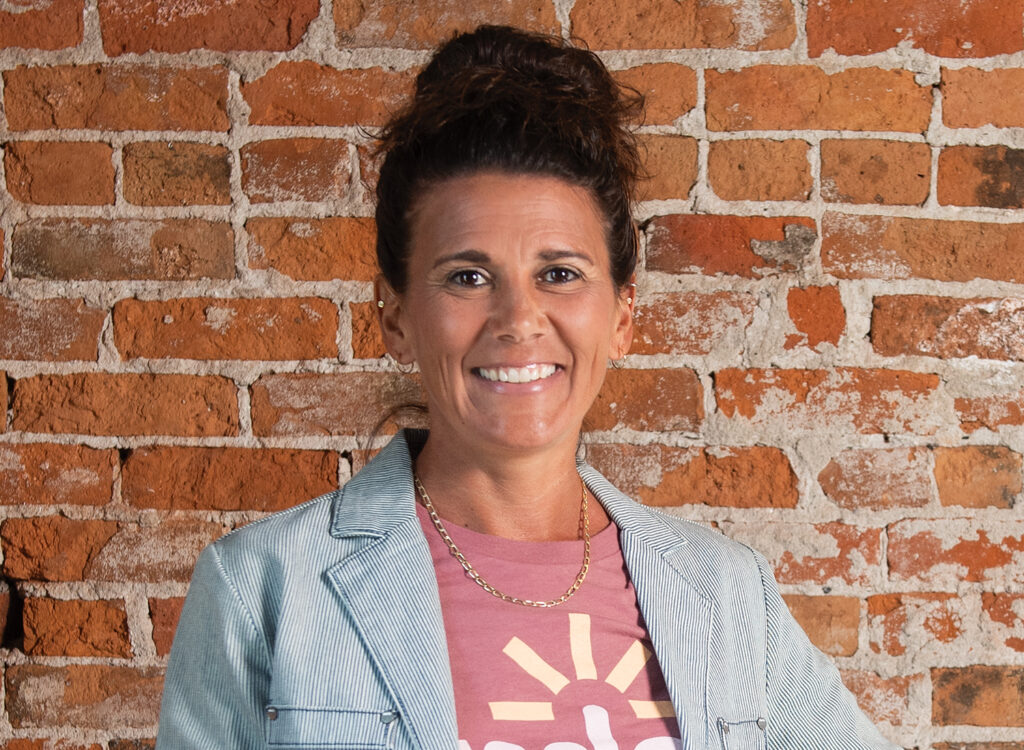A Closer Look: Sheri Penney
employer engagement director, Iowa Women’s Foundation

The child care crisis has been simmering for decades across the state and country. In 2020, it boiled over when Iowa lost a third of its child care slots.
Seeing that child care was crucial to helping the state’s economic recovery from the pandemic, Gov. Kim Reynolds assembled her Child Care Task Force in 2021 to develop a comprehensive strategy to address the crisis.
The 18-member group’s first recommendation was to create a position for someone who would help businesses, employers and communities understand their role in addressing the child care crisis, through a partnership with the Iowa Economic Development Authority and the Iowa Women’s Foundation.
Sheri Penney was hired for the position and began working in June.
Tell me about your background and what drew you to your role.
I knew I’ve always wanted to work with children in some capacity. My husband and I moved to north Iowa after college and there weren’t any teaching positions available. So I got into working for the parks and rec department in Mason City, and ran the before-and-after-school program. I just loved that. I loved the business side and also being able to work with kids. From there, I’ve just always in some capacity worked with children, whether it was substitute teaching in the Osage Community School District or being an area manager for the Head Start program. I also had a little bit of a role in higher education as the registrar for the Art of Education University. At that time, COVID hit and I was trying to work from home with three children. I was that statistic of leaving the workforce. I stayed home for a bit, then decided I needed to kind of get back into the workforce. That’s when I went to North Iowa Community Action as an area manager. But the economic development director in Mitchell County had left, so there was a big hole that our community was trying to fill. My name was thrown out there [for the Mitchell County position], but I’d never even considered it. I decided to take on the challenge and found that I loved it. I loved making those connections and meeting with industry leaders in our community and in our county. The one thing I kept hearing time and time again was “We need houses and we need child care.” So we started exploring innovative ways that we could partner with coalitions to do something with day care in our community. At that same time, I saw the opening for the Iowa Women’s Foundation, and thought, “This is the best of both worlds. I get to keep that economic development knowledge that I have and also all the child care experience and speak to both.”
Describe what you’ll be doing in this role and how people can utilize your expertise.
I am going to be the feet on the ground in communities all across Iowa, working with businesses in the community to help them understand how child care is an economic issue that impacts their workforce attraction and retention. Business leaders can reach out to us via email, or they can request our surveys and toolkits directly from the Iowa Women’s Foundation website. I’d then follow up with an email that says, “Please let us know we can come to your community. If you’d like to have a more detailed conversation, we’d love to help you. It is completely free.”
Explain what those conversations entail.
My role is to go into communities and share the Iowa Women’s Foundation toolkit, which explains to businesses why they should invest in child care, what they’re losing out on by not helping with child care in their communities, and different ways that they can partner together to help solve the child care crisis. The toolkit has six options, including flexible work schedules, partnering with local child care centers and purchasing slots at a local center for their employees. It’s really a consulting approach. Everyone knows that this is an issue and they all want to do something, but they just don’t know what. So my role is to come in and say, “OK, here’s what we’re seeing in other communities. Here’s what you could try here. You may want to take a little bit from community A, a little bit from community B and make your own thing happen right here.”
What are your initial goals with your position?
If you would have asked me this prior to the governor announcing the [business incentive] grant, I would have said if I can reach out and be in 10 communities by the end of the year, that will be a success. Since I have started and the governor announced this grant, we’ve been kind of inundated and I have been drinking from a firehose. [After the grant period is over], I would say my goal is just to be in all of the geographical areas of Iowa, so communities representing the north, south, east and west and then the four corners of the state.
What do you hope to see in your area of work in the next five or 10 years?
I want businesses to see that by investing in child care, they will help eliminate the economic barrier for working parents.
How has the issue of child care in the state evolved since you worked in Mason City? Have you seen it shift at all?
Child care has always been a difficult field in the sense of it’s one of the lower-paying jobs. The employee turnover in child care centers is pretty high. We’re trying to shift the child care business model so that we’re taking the burden off of parents. We know that Iowa is the No. 1 state for parents working outside the home. It’s also one of the most expensive states to raise a child, so the parents can’t keep putting that burden on themselves. We [lost a lot of women in the workforce due to COVID] and they’re not necessarily coming back because there’s no child care available. So what can we do to figure out how to solve this? Well, let’s start looking at the private sector. They need workers to come and fill the jobs. Unless we really meet the needs for parents to be able to go and work, it’s just not feasible for them to get back into the workforce unless they have somewhere to put their children. And we’re even seeing that in before-and-after-school care. Everyone thinks of child care as infants and toddlers but we’re really seeing a lot across the state that it’s ages 0 to 12, because there’s a lot of parents that need summer care and before-and-after-school care because they have meetings.
In your opinion, what role do businesses play in addressing Iowa’s child care crisis?
I think that businesses are the key to our child care crisis. I really do. Iowa loses an estimated $153 million annually in tax revenue due to child care issues. The employee turnover costs in Iowa is estimated at $781 million a year. And that’s because we have parents that are late to work or have to leave early because of child care issues. Businesses don’t necessarily need to go into every community that they’re in and build brand-new child care centers, not at all. It can be as simple as a flexible work schedule or offsetting some of that cost by offering some subsidies. We know that child care is expensive and that the average parent in a two-parent family pays about 11% of their salary toward child care, the national average is 7%. Even offering a subsidy of $100 a week towards child care if you have them in a center or an in-home provider. All of those kinds of things. The return on the investment for the business is really high. They’re going to have less employee turnover. They’re going to have employees that are able to work full shifts, not have to leave early and not miss as many days of work. And especially when you look at the businesses, by the time that they invest in the marketing to hire someone, get them trained, it’s a lot of money going into the attraction and retention. So by keeping them and having something for their child care really eliminates the need for parents to be looking for other jobs. We find that most parents say that having some sort of child care benefit is huge. And in fact, some parents will even take a lower salary if there’s some sort of offset of a child care benefit. One thing we just heard in a community was a day care center director saying she gets calls weekly now from people that are calling because they have a job interview scheduled in that community, and they’re calling her first to see if there’s child care available. If there’s no child care available, they’re not going to take the interview because they’re not going to come and live in your community if they can’t have someone watch their kids while they go to work.
What’s it like being the first person in this position, blazing your own trail?
I tell my friends and family this is so exciting. I feel really inspired that I have this opportunity and that’s one reason that I actually did leave the Mitchell County position, because I saw the impact that child care was having on our tiny little county of 10,000. I can only do so much at the county level. I look at this as my opportunity to be that voice across the state. I would really like to see Iowa do some innovative, amazing things and really lead the nation in innovative child care ideas and getting public-private partnerships. I’d really like to have that positive focus on the state of Iowa and what we’re doing to meet the needs for working parents and working moms.

Emily Kestel
Emily Kestel is the Fearless Editor for Business Record. She covers women’s issues as well as other human interest stories.










